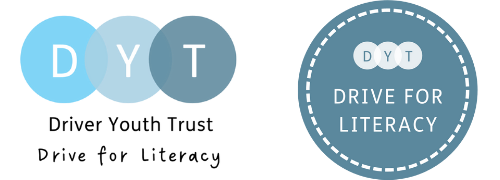Classroom strategies resource supports learners with literacy difficulties
10/10/2019
In honour of Dyslexia Awareness Week 2019, Senior Consultant Teacher Kenny Wheeler has created a resource full of classroom strategies to support learners with literacy difficulties. Here’s what he had to say about the booklet, and what inspired him to write it.
What does the classroom strategies resource focus on?

Senior Consultant Teacher Kenny Wheeler
Essentially, the resource focuses on reminders and tips staff are probably already aware of but forget from time to time. It encourages reflection on considerations we make before and during lessons with regards to literacy difficulties. In a busy week, how much time do we have to take a step back and think about how we are planning to include students who have literacy difficulties within our lessons?
What is this resource drawing attention to in terms of teaching learners with literacy difficulties?
In some respects, it is an aide memoire: have we thought about these aspects of literacy when we are planning to deliver our lessons? If we haven’t then we might be inadvertently making it harder for some students to access the lesson. In a busy world with a packed curriculum there is pressure to get content covered. However, we need to consider how we plan and deliver content. Oral input might be the preference for some teachers to cover content with speed, but we do need to consider how we are backing up the oral input so that students have something to refer back to.
How important is it to consider the classroom environment when it comes to literacy difficulties?
The classroom environment can be a source of support but also a source of distraction. It is well worth doing an audit of your classroom, what is likely to distract students (noisy computers, flickering lights, busy displays) and what is there to support students (word mats, simple displays, keywords with definitions). It may be the case that the classroom is overstimulating some students to the point that it distracts them from their learning. It’s almost like Goldilocks and the three bears! What is too much information, what is not enough and what is just right?
Why is it important to consider homework strategies when it comes to learners with literacy difficulties?
Firstly, I think it is worth considering the conditions in which homework is given out. Is it always at the end of the lesson when students are packing away their bags and scribbling down instructions over a fair bit of noise? How much are students going to realistically remember, and will they be able to explain this to their parents who might be looking at how they can help their child? It is sometimes seen as an unpopular option, but if teachers are setting homework then I suggest we do so at the beginning of the lesson and make it clear how it is relevant to the topics being covered.
Homework strategies are useful because the class teacher needs to know what the student knows. Giving the option of using different mediums to convey their understanding helps students do this. For example, being able to type rather than write may mean that a student can produce a lot more work because they do not have to go through the (sometimes difficult) physical act of writing. It is also useful knowing how much a student can do independently, so having the time taken to complete the work written in the margin can give the teacher an idea that someone struggles and may benefit from additional guidance such as scaffolding or planning out their answers.
Who do you think will benefit the most from this resource?
I hope this helps members of staff who want ideas and strategies to try out, experiment with to see what works, when it works and when it doesn’t work to support their development are likely to get the most benefit from the resource. After all, some of the strategies will work some of the time with some of the students; just because they don’t work on an occasion doesn’t mean you should just discard them.
What inspired you to write the resource?
What inspired me was reflecting on how much teachers are expected to do within the classroom. There is a lot of pressure on teaching staff to ensure progress, focus on data, and meet the needs of different learners. The resource can help in just reflecting about what we actually want from our planning and delivery. Don’t do more for the sake of it; consider what you are doing. By adopting some of these strategies you will be supporting more students without doing manic jazz hands.
The other thing that inspired me (and was also my salvation as a SENCo) was a resource from ATL called Achievement for All. It covered different areas of need, their symptoms and then gave strategies to try out. I thought these were great, a range of strategies to use so you have large repertoire to draw from when working with students who may have differing needs.
What is your favourite/the most useful tip from the booklet?
I don’t have any favourites; I think all the strategies have their merits at different points of the learning journey. If we have favourites there is a risk we overuse them and we may also forget some of the other strategies that may have otherwise been useful. Multifaceted problems need multifaceted solutions!
Download the resource HERE for free!
